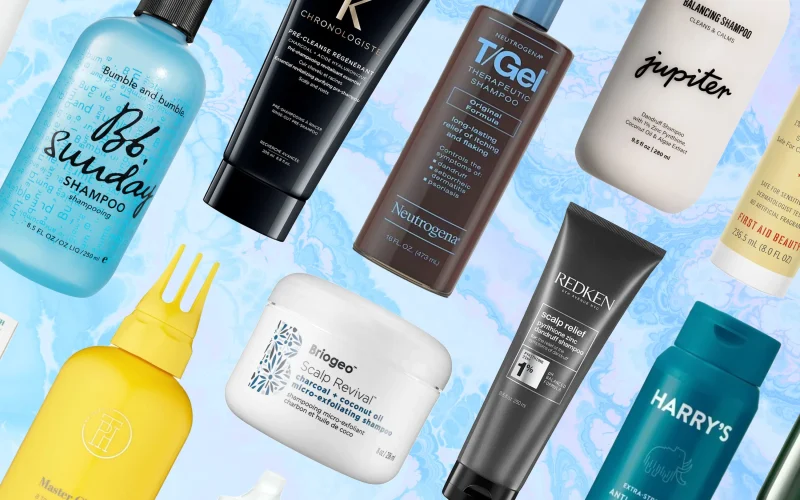Introduction
Imagine washing your hair without stripping away its natural oils or fading your fresh dye job. Sulfate-free shampoo makes this possible. While traditional shampoos use sulfates like sodium lauryl sulfate (SLS) for a lathering clean, these harsh detergents can lead to dryness, irritation, and color washout. Switching to a gentle, sulfate-free formula can transform your hair’s health, shine, and manageability—whether you have curly locks, a sensitive scalp, or color-treated strands. In this article, we’ll explore what sulfate-free shampoo is, why you might choose it, and how to select the right one for your hair. Plus, we’ll cover tips for a smooth transition and maximizing your wash-day routine.
1. What Are Sulfates and Why Are They Used?
Sulfates are powerful cleansing agents found in many personal care products. The most common are:
- Sodium Lauryl Sulfate (SLS)
- Sodium Laureth Sulfate (SLES)
- Ammonium Lauryl Sulfate (ALS)
These ingredients create rich foam and remove oil and dirt by breaking down grease on your scalp and hair. However, their strength can backfire when used daily.
2. Why Avoid Sulfates?
2.1 Dryness and Frizz
Sulfates strip sebum—your hair’s natural oil—leaving strands dry and brittle. Dry hair is prone to breakage and frizz, especially in humid or windy conditions.
2.2 Color Fading
If you have dyed hair, sulfates can accelerate color washout. By opening the hair cuticle too wide, they allow pigment to escape, dulling vibrant reds, blues, and blondes after just a few washes.
2.3 Scalp Irritation
Sensitive scalps may react to sulfates with itching, redness, or dandruff. The harsh lathering can disrupt your scalp’s pH balance, leading to discomfort or flaking.
2.4 Eye and Skin Sensitivity
Sulfate residues can irritate your eyes and skin. If you shampoo frequently or have extra-sensitive skin, you may notice burning eyes or dry patches behind your ears and along your hairline.
3. Benefits of Sulfate-Free Shampoo
Switching to a sulfate-free shampoo offers several advantages:
3.1 Gentle Cleansing
Sulfate-free formulas use milder surfactants—like cocamidopropyl betaine or decyl glucoside—that clean without over-stripping oils. Your hair feels softer and retains natural moisture.
3.2 Color Protection
By preserving the hair cuticle’s integrity, sulfate-free shampoos help maintain color vibrancy longer. Whether you have highlights, balayage, or bold fashion hues, your dye job stays brighter between salon visits.
3.3 Healthier Scalp
Gentler cleansing supports a balanced scalp environment. This can reduce itching, flaking, and inflammation, making sulfate-free shampoo ideal for people with eczema, psoriasis, or general scalp sensitivity.
3.4 Enhanced Shine and Smoothness
When hair retains its natural oils, it looks shinier and feels sleeker. Curly-haired individuals especially benefit, as natural moisture helps define curls and reduce frizz.
3.5 Eco-Friendly Formulas
Many sulfate-free shampoos use biodegradable surfactants and natural extracts. This can lower environmental impact by minimizing harsh chemicals released into waterways.
4. Key Ingredients to Look For
Not all “sulfate-free” shampoos are created equal. Check labels for:
| Ingredient | Benefit |
|---|---|
| Cocamidopropyl Betaine | Gentle foaming, derived from coconut |
| Decyl/Laureth/Glucoside | Mild cleansing, plant-based |
| Sodium Cocoyl Isethionate | Creamy lather, ultra-gentle |
| Hydrolyzed Keratin or Silk | Strengthens and smooths hair cuticle |
| Panthenol (Pro-Vitamin B5) | Hydrates and adds shine |
| Aloe Vera Extract | Soothes scalp, anti-inflammatory |
| Glycerin | Moisture-binding humectant |
| Natural Oils (Argan, Jojoba) | Nourishes and protects |
Avoid sulfates and harsh sulfamic acids, and opt for pumps or droppers that list these milder surfactants first.
5. How to Transition to Sulfate-Free Shampoo
Switching straight from a high-sulfate shampoo can feel odd, since you’ll notice less foam and a different lather texture. Here’s how to adapt:
5.1 Start with a Clarifying Wash
Before going sulfate-free, use a gentle clarifying shampoo to remove buildup. This helps your hair absorb the new formula more effectively.
5.2 Alternate for the First Few Weeks
Mix one sulfate-free wash with one regular wash each week. This gradual shift avoids shock to your scalp and hair.
5.3 Focus on Scalp Massage
Spend extra time massaging your scalp to work the gentle lather through oil and dirt. Good rinsing—especially at roots—ensures clean hair without heavy foam.
5.4 Increase Wash Frequency if Needed
Some people find sulfate-free lines leave hair feeling “heavy” initially. Adding a light clarifying rinse or washing two days in a row can settle your strands into their fresh routine.
6. Tips for Maximizing Results
6.1 Pair with Sulfate-Free Conditioner
Lock in moisture with a matching conditioner. Look for silicone-free formulas to avoid buildup.
6.2 Use a Deep Conditioning Mask
Once a week, apply a rich hair mask (e.g., shea butter or coconut oil based) to replenish lipids and repair damage.
6.3 Minimize Heat Styling
To help hair adapt, reduce blowouts and hot tools. If you must, use a heat protectant that aligns with your gentle regimen.
6.4 Brush with a Wide-Tooth Comb
Wet hair is most vulnerable. After showering, detangle with a wide-tooth comb or a wet brush to prevent breakage.
6.5 Protect from UV and Chlorine
Sulfate-free hair may lose some resilience against sun and pool water. Wear a swim cap or apply UV/hydro-protectant sprays when swimming or in strong sunlight.
7. Who Should Use Sulfate-Free Shampoo?
Sulfate-free shampoos suit a wide range of hair types and concerns:
- Color-Treated Hair: Keeps dye locked in longer.
- Curly & Coily Hair: Maintains natural oils for better curl definition.
- Dry or Damaged Strands: Gentle cleansing reduces further damage.
- Sensitive Scalps: Calmer, less irritating wash experience.
- Daily Washers: Avoids over-stripping for those who shampoo every day.
- Children’s Hair: Milder ingredients safe for delicate scalps.
Even men who use shampoo daily can benefit from switching to a gentle, sulfate-free formula to prevent scalp dryness and dandruff.
8. Debunking Common Myths
Myth 1: “No Foam Means It’s Not Cleaning”
Sulfate-free shampoos foam less but still lift oil and dirt effectively. Active surfactants may not create huge lather, but they work just as well.
Myth 2: “Only Natural Brands Are Sulfate-Free”
Many mainstream and salon brands now offer high-performance sulfate-free lines. You don’t have to pay luxury prices for quality.
Myth 3: “I Need Sulfates for Scalp Health”
For most people, gentle surfactants preserve scalp balance better than harsh detergents. If you have heavy product buildup, use a clarifying wash monthly instead.
9. Top Sulfate-Free Shampoos to Try
Here are popular picks to get you started:
| Brand & Line | Highlights |
|---|---|
| SheaMoisture Coconut & Hibiscus | Great for curl definition and moisture |
| Aveda Shampure | Calming scent, gentle daily use |
| OGX Nourishing + Coconut Milk | Affordable, tropical oils for hydration |
| Pureology Hydrate | Pure-fume aroma, color-safe formula |
| L’Oréal EverPure | Sulfate-free, salon performance at drugstore prices |
| Briogeo Be Gentle | Vegan, clean ingredients, suitable for all hair types |
Conclusion
Switching to a sulfate-free shampoo is a simple change that delivers big rewards: softer, shinier, more manageable hair that holds color longer and soothes sensitive scalps. By choosing gentle surfactants like cocamidopropyl betaine, pairing your wash with nourishing conditioners and masks, and easing into the transition, you’ll protect your hair’s natural oils and keep strands healthy for the long haul. Whether your hair is curly, color-treated, or prone to dryness, sulfate-free formulas offer a safe and effective way to cleanse without compromise. Make the swap today, and enjoy clean, vibrant, and gentle haircare every day.










